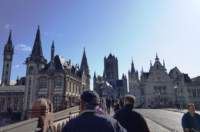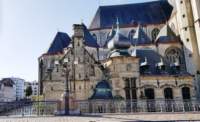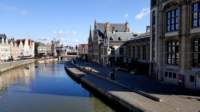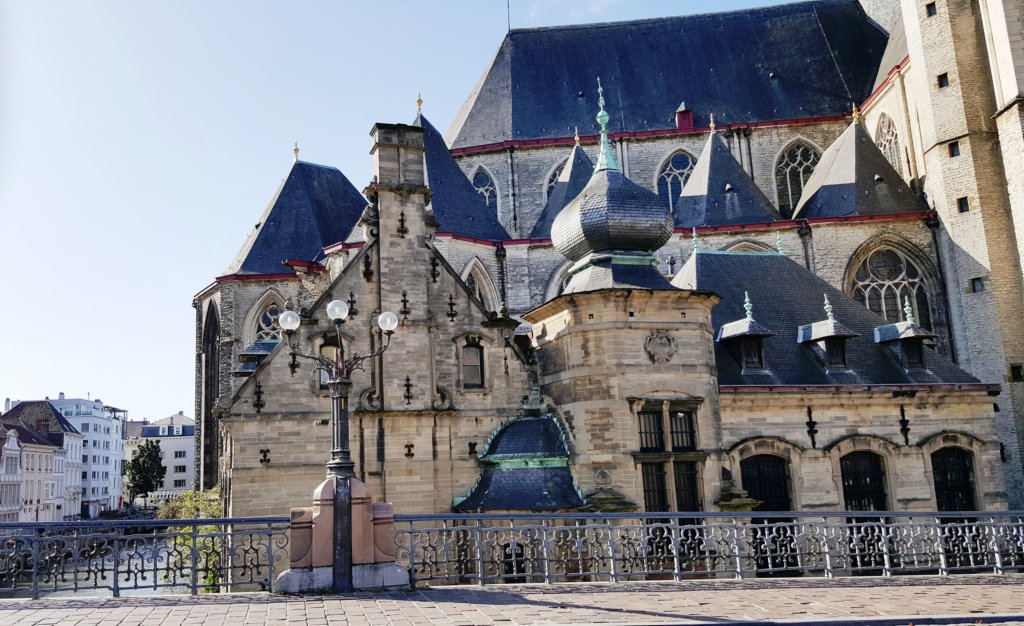| << Previous | Index | Next >> | ||
 |
 |
 |
 |
 |

Documents from 1105 testify to the existence on the site of a chapel dedicated to St. Michael which was subordinate to another parish. The building was twice destroyed by fire early in the twelfth century and rebuilt.[1] From 1147 it was recognized as an independent parochial church.
Christ dying on the Cross by Anthony van Dyck
Construction of the current late Gothic church was probably commenced in 1440, and took place in two phases, separated by a long interval. During the first phase, in the fifteenth and sixteenth centuries, the western part of the building was built, including the tower, the three-aisled nave and transept. This was completed in 1528. The construction of the western tower continued and by 1566 two levels of the tower were completed. Then, due to religious conflicts, not only did construction stop, but looting and destruction took place. Part of the church was destroyed in 1578 by Calvinists and in 1579 the old choir was demolished.
Reconstruction of the church only started in 1623. The early Gothic choir was replaced by a choir in Brabantine Gothic. Local architect Lieven Cruyl made a design for the unfinished western tower in 1662. The design provided for a spire of 134-metre-high in Brabantine Gothic style but was never realised.[2] As a result of these delays and cost concerns, the tower was in the end never completed. Only in 1828 was a flat roof built over the unfinished tower.[1]
The sacristy in the north-east was constructed in Baroque style in 1650-1651.[2
Photo album created with Web Album Generator